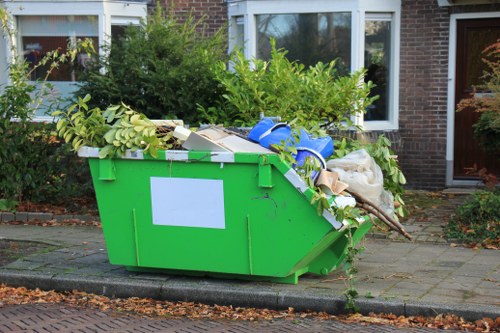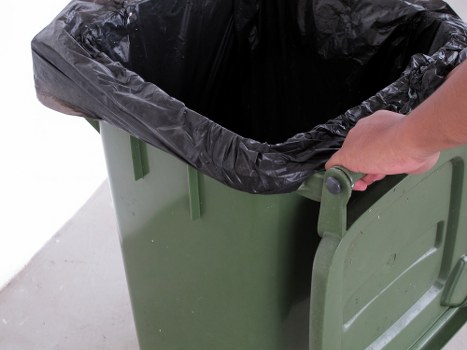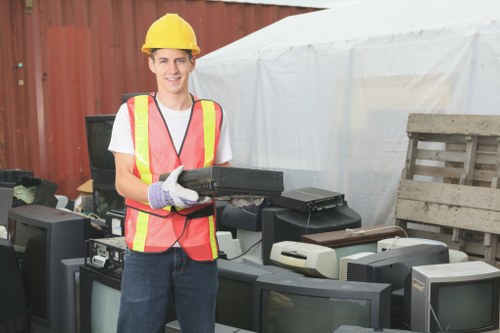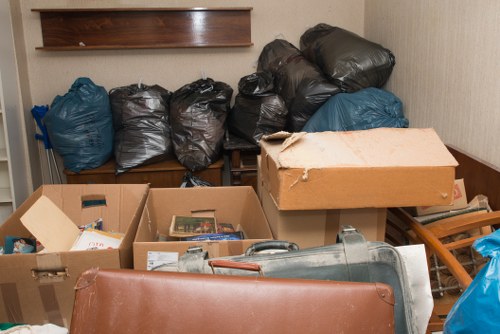Waste Clearance in Rubbish Clearances
Introduction to Waste Clearance in Rubbish Clearances

Waste clearance is a critical service in today’s rapidly urbanizing world. It ensures that rubbish clearances are carried out efficiently, preventing clutter and environmental hazards. In this article, we explore the essential aspects of waste clearance services, the challenges faced in the industry, and the innovative solutions that professionals are implementing to deliver outstanding results. Waste clearance not only involves the removal of waste materials but also emphasizes sustainable practices and responsible disposal methods. It is an evolving field that integrates technology, environmental awareness, and regulatory compliance.
When we discuss rubbish clearances, the term waste clearance invariably highlights the importance of safe, reliable, and environmentally conscious removal procedures. The sector has seen progressive improvements in both operational strategies and the equipment used. This advancement positions modern waste clearance as a service that protects public health, supports recycling initiatives, and minimizes landfill dependency. Eco-friendly practices are central to this process, helping communities reduce their carbon footprint while maintaining a clean and safe environment.
Across different regions, waste clearance in rubbish clearances is influenced by local policies and government regulations. Companies in this sector must adhere to strict standards that govern the transportation, processing, and disposal of waste. These regulations ensure that waste is handled in a manner that safeguards both the community and the environment. Innovative clearance techniques such as compacting machinery and automated sorting systems are enhancing the effectiveness of waste removal. Moreover, the focus on environmentally sustainable methods is continuously growing, as businesses and municipalities embrace green solutions.
Environmental Impact and Sustainable Practices

The environmental impact of ineffective waste clearance can be severe. Poorly managed rubbish clearances often lead to the contamination of soil and waterways, contributing to broader ecological challenges. Sustainable practices in waste clearance are vital for mitigating these effects. By adopting environmentally friendly protocols, industries can reduce hazardous emissions and promote recycling, thus conserving natural resources. Many organizations are now implementing structured recycling programs and waste-to-energy technologies that transform refuse into a valuable resource.
Moreover, waste clearance firms are investing in advanced sorting and processing equipment. These technologies not only improve efficiency but also significantly cut down on the volume of waste that ends up in landfills. This dual approach of technological integration and sustainability is critical in combating environmental degradation. The industry’s commitment to green practices involves periodic audits and adjustments to ensure that all waste is removed and repurposed responsibly, ultimately leading to a healthier ecosystem.
Apart from technological advances, education plays a pivotal role in waste clearance management. Informative campaigns aimed at residents and businesses emphasize the importance of proper waste segregation. Recycling tips, reduction of single-use materials, and the careful disposal of hazardous waste have become commonplace in municipal strategies. Companies encourage communities to participate, highlighting that every bit of effort contributes substantially toward energy conservation and the overall health of our planet.
Economic, Legal, and Regulatory Considerations

Economic factors are closely intertwined with effective waste clearance. Rubbish clearances generate employment opportunities and stimulate local economies by involving multiple stakeholders, including transportation, recycling, and processing. Investment in modern waste clearance equipment and technologies enhances operational timelines, minimizes cost, and increases profit margins for service providers. Cost-effective solutions in waste management create value for clients, making sustainable services accessible to a broader audience. As a result, economies benefit from cleaner environments and improved public health metrics.
The legal framework governing waste clearance is complex and multifaceted. Local and national regulations dictate strict guidelines on how waste must be processed and disposed of. Companies involved in rubbish clearances must obtain various licenses and permits, ensuring their operations are legally compliant and socially responsible. Adhering to these rules not only fortifies a company’s reputation but also guarantees a higher standard of service to all stakeholders involved. Awareness and training in environmental laws are now mandatory for workers in the field, signifying a shift towards more knowledgeable waste management practices.
Transparency in waste clearance operations is essential to maintain public trust. Detailed record-keeping and regular audits are imperative for businesses looking to adhere to legal standards. Regulatory bodies conduct periodic assessments to ensure that waste is not only cleared efficiently but also disposed of in a manner that aligns with environmental best practices. This meticulous approach to management has spurred innovation in waste processing technologies, leading to more active recycling and repurposing of materials.
Modern Methods and Technologies in Waste Clearance

Technology plays a transformative role in the domain of waste clearance. Modern rubbish clearances increasingly rely on state-of-the-art equipment and digital management systems that optimize every phase of the process. Automated sorting systems, advanced compaction machinery, and even AI-driven logistics are now standard fixtures in the industry. Such tools serve to enhance the speed, effectiveness, and environmental safety of waste operations. Innovations in technology ensure that waste clearance procedures are streamlined and that recyclable materials are quickly separated from non-recyclable waste.
In addition, the integration of mobile applications and cloud-based management systems allows for real-time tracking of waste clearance operations. These innovations ensure that both households and businesses can monitor service progress and plan their schedules accordingly. App-driven notifications have proven to be a game changer, enabling both service providers and customers to maintain timely communication. This level of interaction increases efficiency and helps resolve issues proactively, ensuring a seamless experience for all parties involved.
The role of modern technology in rubbish clearances is also evident in the training of personnel. Digital platforms provide comprehensive training modules that educate workers on the latest safety protocols and best practices. Interactive simulations and instructional videos help trainees quickly master the intricacies of waste management. As a result, companies are better equipped to handle diverse scenarios, ensuring that every clearance task is performed to the highest standards of safety and efficacy.
Future Trends and Effective Waste Management Strategies

The future of waste clearance is bright, bolstered by ongoing innovation and a global commitment to sustainability. Future trends in rubbish clearances include the adoption of renewable energy sources to power equipment, further reducing environmental impact. Companies are also exploring the concept of a circular economy, where waste is not discarded but instead transformed into new products. This forward-thinking approach minimizes waste and promotes resource efficiency.
Emerging strategies that focus on community engagement and public-private partnerships are shaping the future of waste clearance. Sustainable waste management practices are being molded by collaboration between industry experts, regulatory bodies, and local communities. For instance, integrated recycling programs and educational workshops empower residents to actively participate in waste segregation. Initiatives such as these not only raise environmental awareness but also foster a strong communal bond in the pursuit of cleaner, greener neighborhoods.
Innovative business models are also emerging in the industry. Companies are diversifying their services by offering specialized solutions for hazardous and electronic waste clearance alongside traditional rubbish removal. Flexible service packages allow clients to choose solutions tailored to their specific needs, ensuring that every waste clearance task adheres to the highest standards. Contact us today or Book your service now to experience modern waste management that puts sustainability and efficiency at the forefront. With smart planning and a commitment to best practices, the future of waste clearance in rubbish clearances promises to be not only innovative but also incredibly impactful on both a local and global scale.
Key Benefits of Modern Waste Clearance Services
Waste clearance and rubbish clearances offer numerous advantages that extend beyond simple removal of unwanted refuse:
- Environmental Preservation: Modern techniques ensure minimal impact on ecosystems through sustainable processes.
- Economic Growth: Enhanced clearance services create jobs and stimulate local economies.
- Improved Public Health: Effective waste management reduces disease vectors and pollution.
Advanced Technologies
The integration of digital management platforms and automated equipment is revolutionizing how waste is sorted, processed, and recycled. Such advances allow for higher efficiency and improved tracking of waste disposal. Furthermore, state-of-the-art machinery minimizes human error and reduces operational risks.
Future-Proof Solutions
Investing in the latest waste clearance technologies and training programs not only enhances current procedures but also prepares the industry for tomorrow's challenges. These strategies ensure that service providers remain at the forefront of innovation, adapting to emerging trends and sustaining long-term growth.
Overall, the importance of waste clearance in rubbish clearances cannot be overstated. From its initial role in urban maintenance to its current function as a cornerstone of environmental strategy, the field has evolved dramatically. By maintaining a focus on sustainable methodologies and regulatory adherence, modern clearance services continue to provide enormous value to communities worldwide.
As technology and environmental concerns converge, the waste clearance industry is compelled to innovate constantly. Initiatives such as local recycling drives and educational outreach further support efforts to maintain cleanliness and sustainability. Organizations and local governments are increasingly united in their dedication to improve standards and deliver effective clearance services that benefit society at large.
In conclusion, the multifaceted approach to waste clearance not only addresses the immediate needs of rubbish clearances but also acts as a catalyst for broader changes in community health and environmental stewardship. These progressive practices signal a future where waste management is not merely a service, but a dynamic industry that actively enhances quality of life on a global scale. Book your service now and join a network dedicated to excellence in waste clearance.